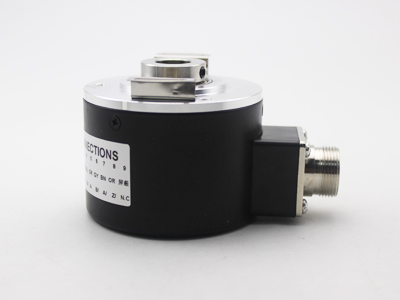Different encoder application scenarios: understand the role of various encoders
In the world of automation and control systems, encoders play a key role in converting physical motion into electrical signals that the control system can interpret. These devices are essential in a variety of applications from robotics to industrial machinery, and understanding the different types of encoders and their specific application scenarios is essential to optimizing performance and efficiency.
Types of encoders
Encoders can be roughly divided into two categories: incremental encoders and absolute encoders.
1. Incremental encoders: These encoders provide relative position information. They generate a series of pulses as the shaft rotates, allowing the system to track motion from a known starting point. Incremental encoders are widely used in applications where precise position is not as important as direction and speed of motion.
2. Absolute encoder: In contrast, an absolute encoder provides a unique position value for each shaft angle, ensuring the system knows the exact position at all times. This type of encoder is essential in applications where precision is critical, such as CNC machines and robotics.
Application Scenario
1. Robotics: In robotic systems, encoders are essential for motion control. Incremental encoders are often used in joint actuators to monitor the position and speed of robotic arms. They can precisely control motion, allowing robots to perform complex tasks with high accuracy. On the other hand, absolute encoders are used in applications where the robot must return to a specific position after a power outage, ensuring that the robot can resume the task without recalibration.
2. Industrial Automation: In manufacturing environments, encoders are an integral part of conveyor systems, assembly lines, and automated guided vehicles (AGVs). Incremental encoders help track the speed and position of conveyors, ensuring that products move efficiently through the production process. Absolute encoders are used in AGVs to maintain accurate positioning and navigation, allowing these vehicles to operate safely and efficiently in dynamic environments.
3. CNC machining: In CNC (computer numerical control) machines, precision is critical. Absolute encoders are often used to provide precise position feedback to the machine's cutting tools. This ensures that the tool can be accurately positioned to make intricate cuts, improving the quality of the finished product. Incremental encoders can also be used in conjunction with absolute encoders to monitor the speed and direction of tool movement.
4. Elevators and escalators: Encoders are essential in the operation of elevators and escalators, where they help monitor the position and speed of moving parts. Absolute encoders are particularly useful in elevators because they provide precise position data, ensuring that the elevator stops at the correct floor. Incremental encoders can be used to track the speed of escalators, ensuring a smooth and safe ride for passengers.
5. Automotive Applications: In modern vehicles, encoders are used in a variety of systems, including steering, throttle control, and anti-lock braking systems (ABS). Absolute encoders provide critical feedback to the steering system, thereby accurately controlling the direction of the vehicle. Incremental encoders are often used in throttle control systems to monitor the position of the accelerator pedal to ensure optimal engine performance.
In conclusion ,the role of different types of encoders in different application scenarios cannot be underestimated. From robotics to industrial automation, the choice between incremental and absolute encoders can significantly affect the performance and efficiency of the system. Understanding the specific requirements of each application is crucial to selecting the right encoder type, ultimately improving the functionality and reliability of modern technology. As industry continues to evolve, the demand for precise and efficient motion control will only increase, making encoders an indispensable component of future automation.
